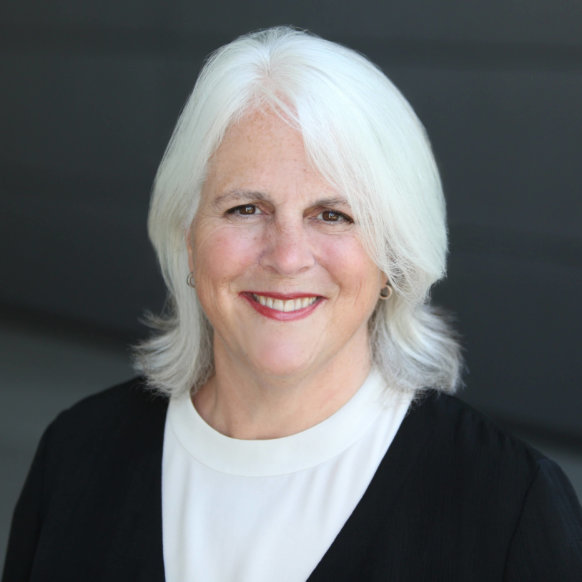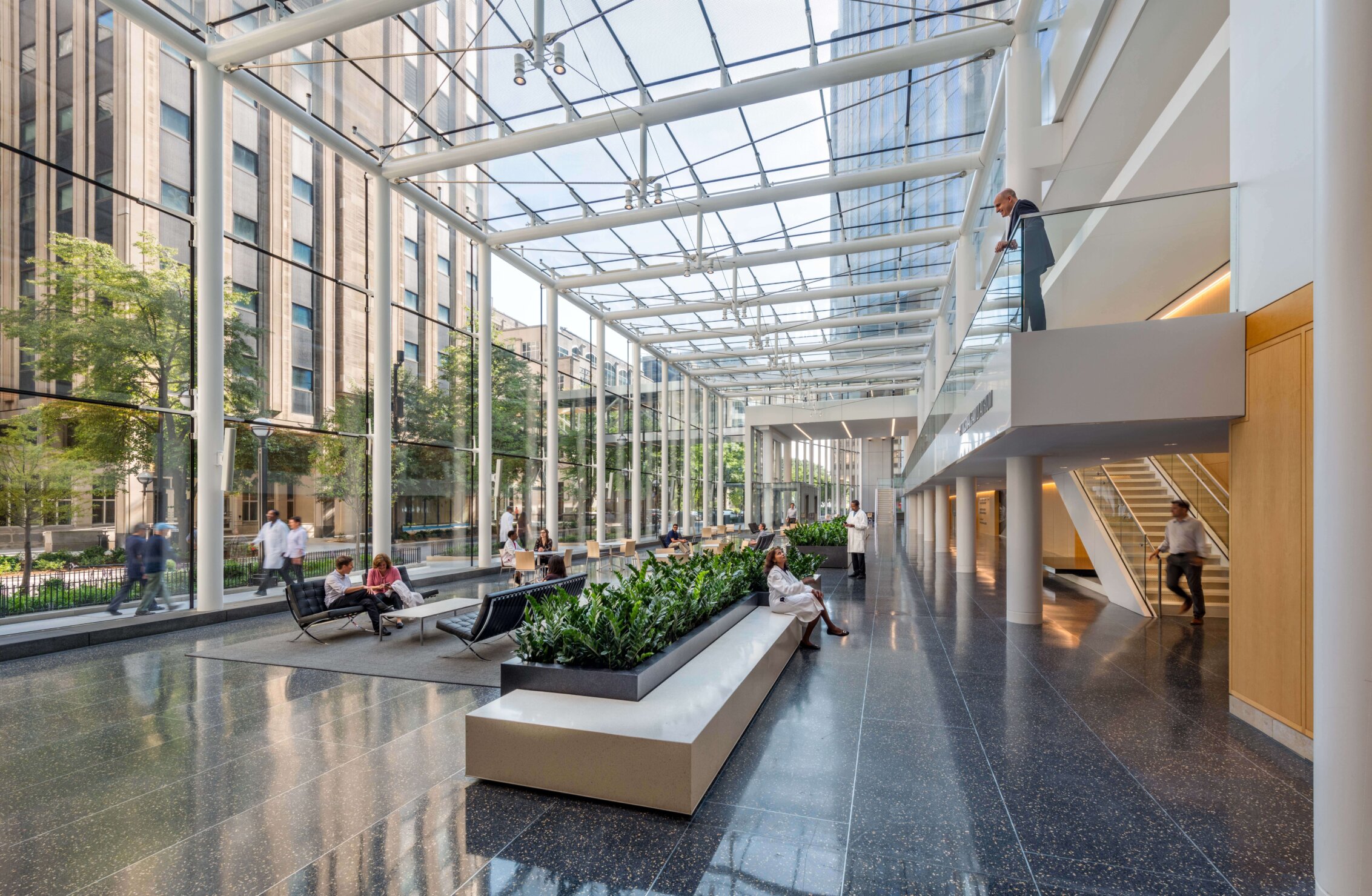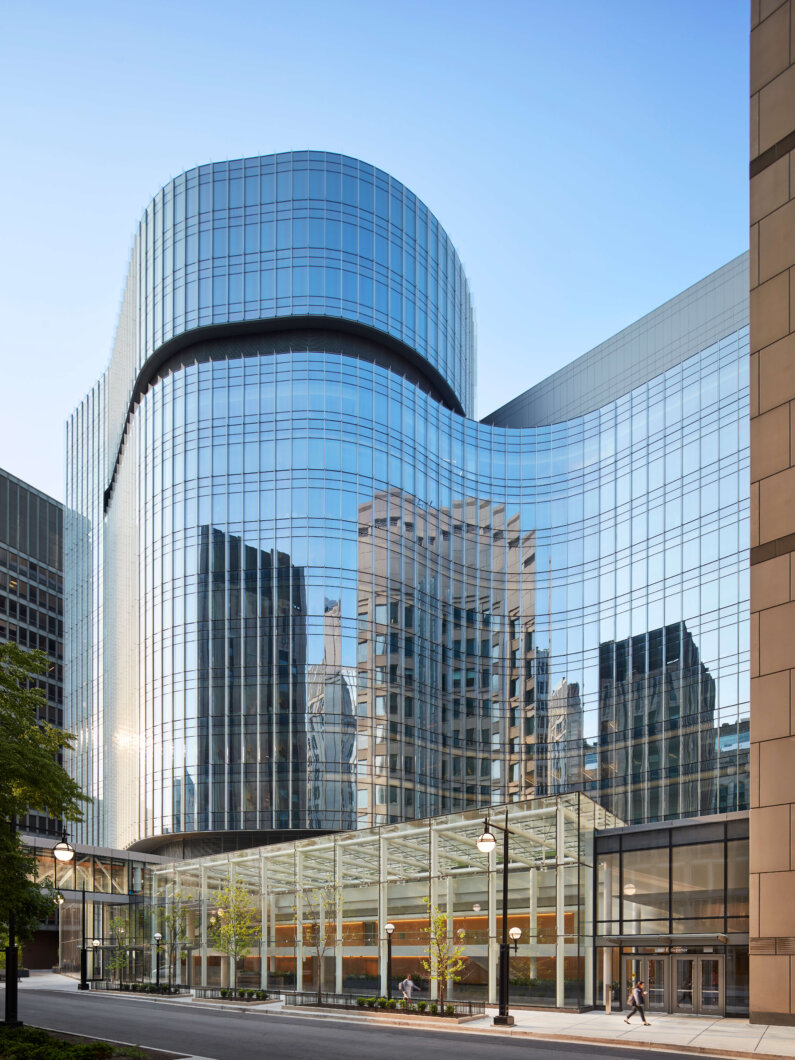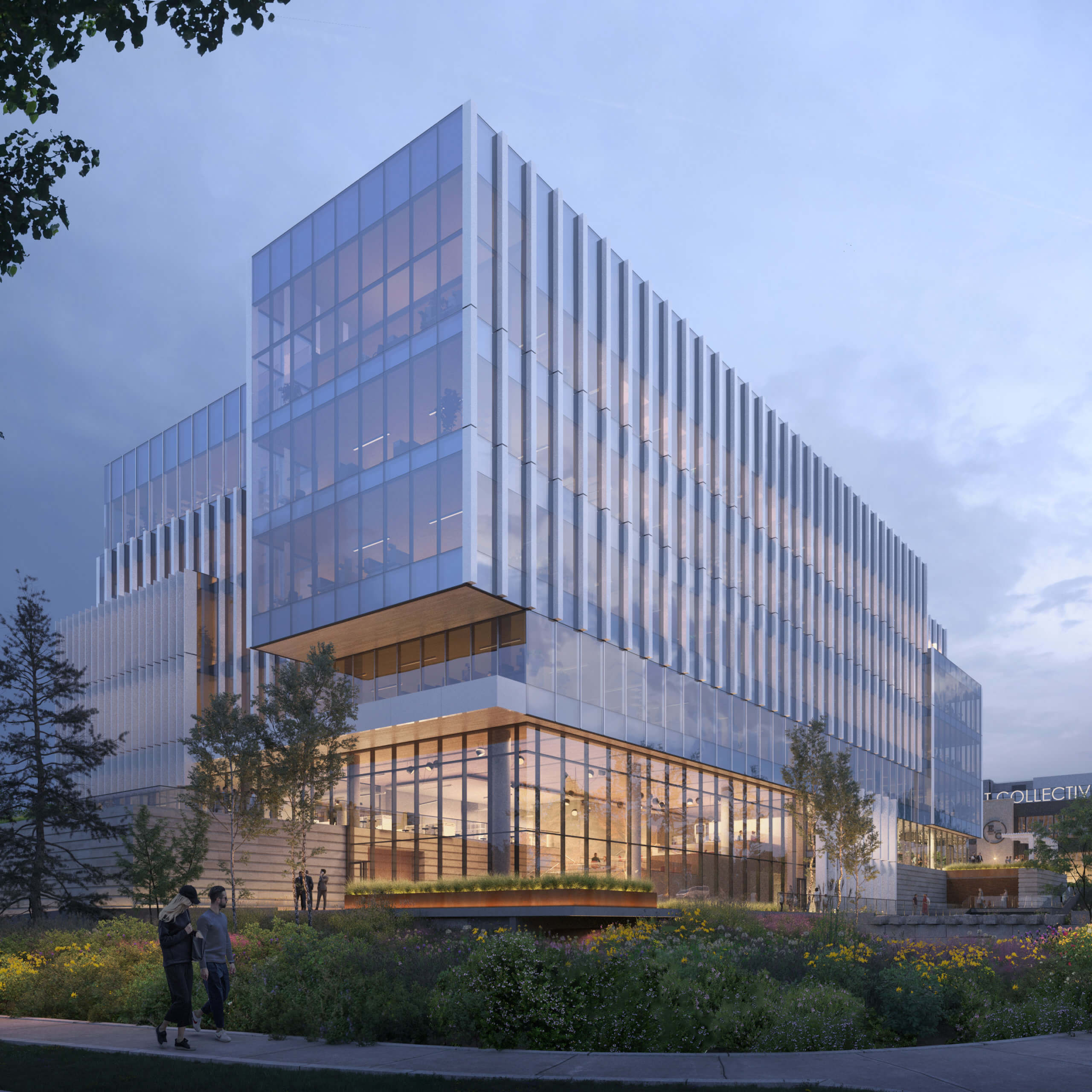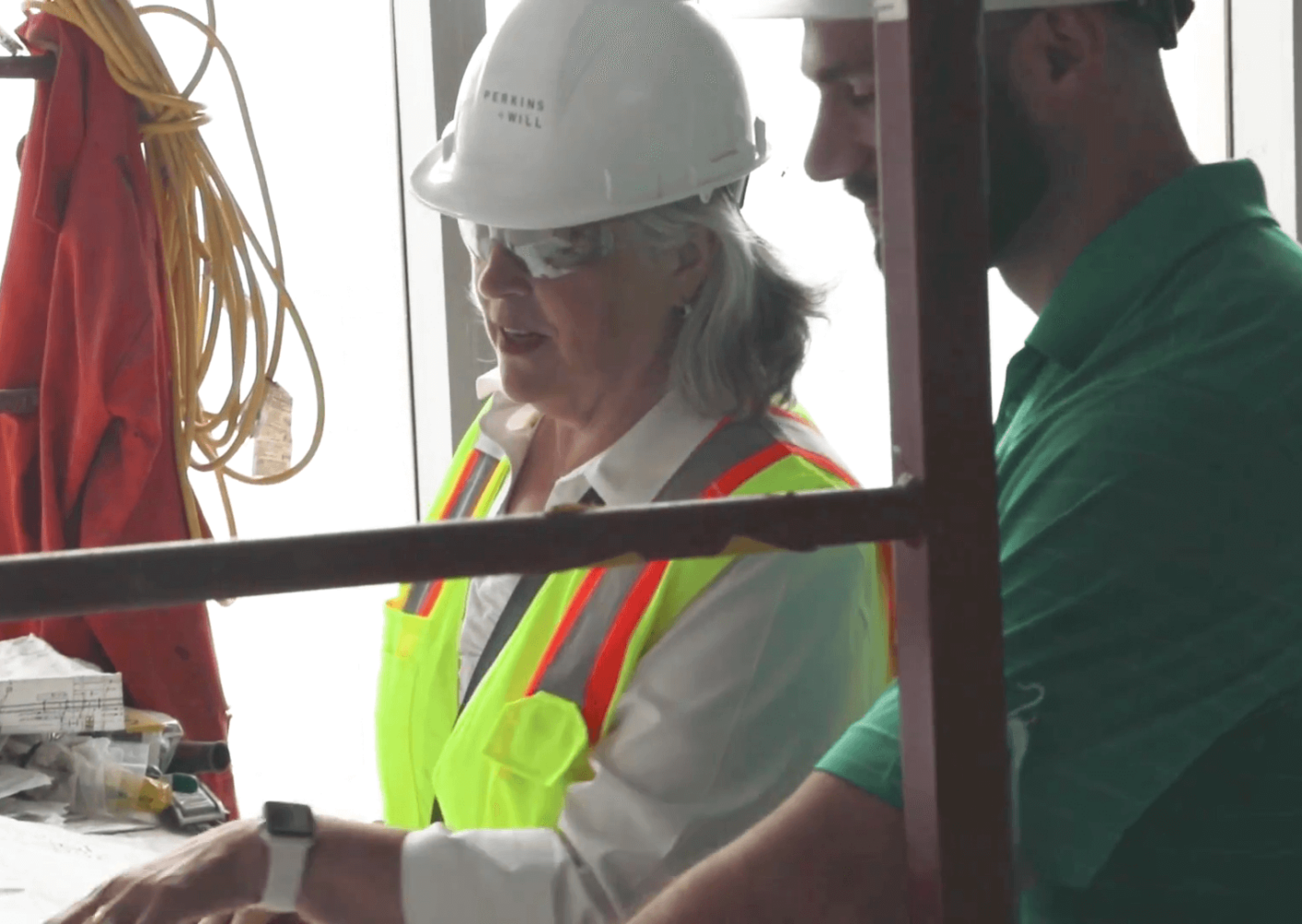While collaborating with our client on the design of the Louis A. Simpson and Kimberly K. Querrey Biomedical Research Center for Northwestern University—a massive state-of-the-art facility housing labs and laboratory support for over 200 principal investigators and 1,450 researchers—the color blue became a topic of friendly debate. “The dean insisted he wanted blue glass because he liked the glass on another building in Chicago,” says Bonnie Humphrey, the university’s Director of Design. “Only that glass—which was also the glass we were planning to use on our research center—isn’t actually blue.”
So Bridget Lesniak, a Managing Principal in our Chicago studio who led the design team on the project, rented a limo and took the dean and other key decision makers to the building to compare the glass for themselves. Once they saw the sample glass next to the building’s facade, “the dean admitted it wasn’t really blue,” Humphrey remembers. “Bridget just had a great way of creatively navigating a potentially difficult situation while remaining warm and personable.” Adds Lesniak: “It’s always great to have a client that really wants good design and respects what we do.”
At 624,700 square feet, the Simpson Querrey Biomedical Research Center is the largest building—and arguably one of the most important—at the Feinberg School of Medicine. It was also the first time Lesniak and members of her hand-picked team had designed a double skin façade, adding further complexity a building that features a separate curved façade on its opposite side. “That’s the joy of the job, tackling a problem you haven’t before,” she says. “The bigger and more complicated, the better.”
Successfully navigating such challenges offers the ultimate reward: satisfied clients. “I love the façade and views toward the lake from the inside,” Humphrey says. “It’s just a beautiful composition.”
Lesniak points out: “At the ribbon cutting ceremony, when the dean talked about the advancements that science has brought to human health, I was on the verge of tears. That was one of the highlights of my career.”
